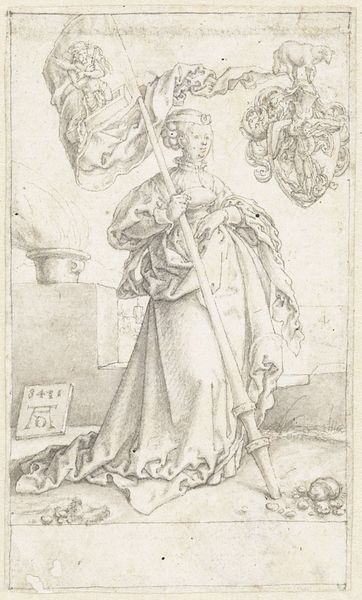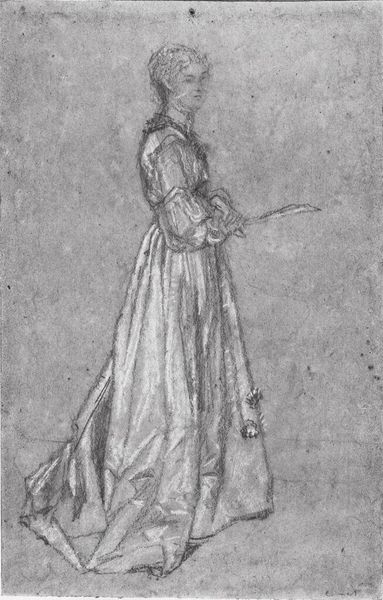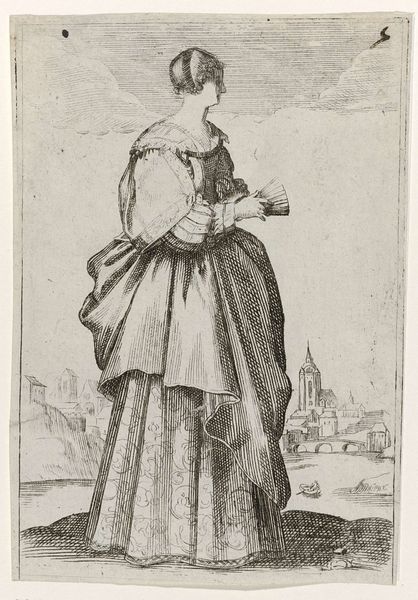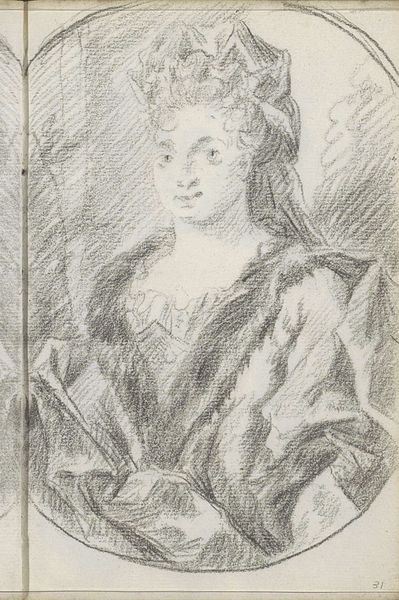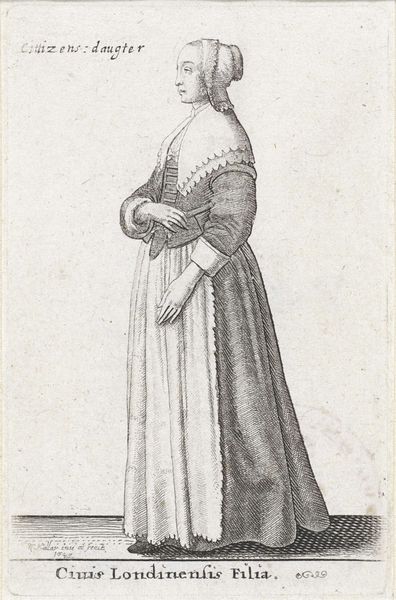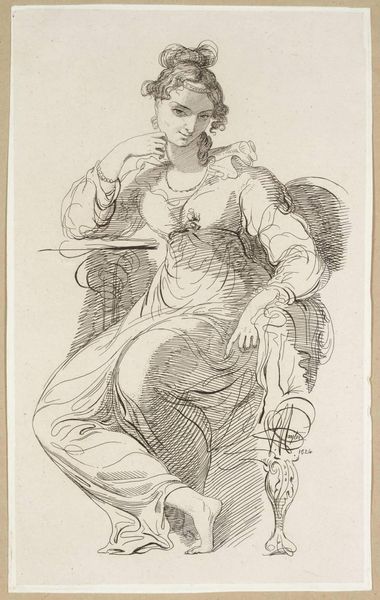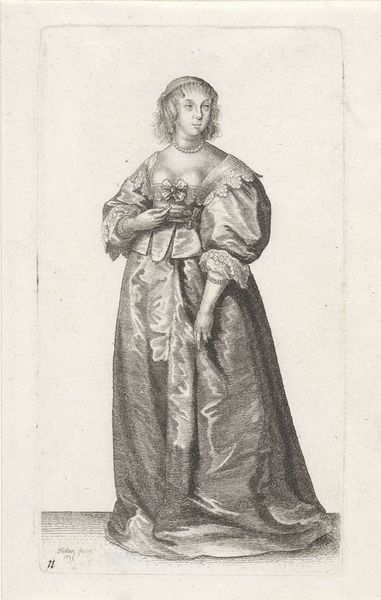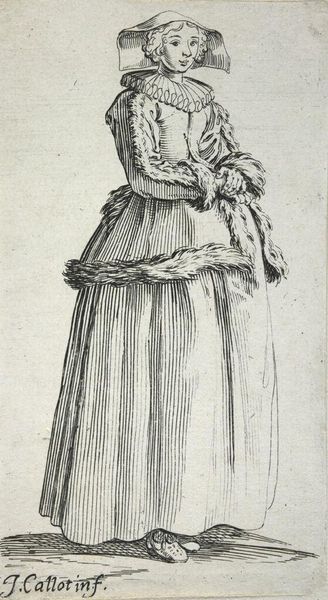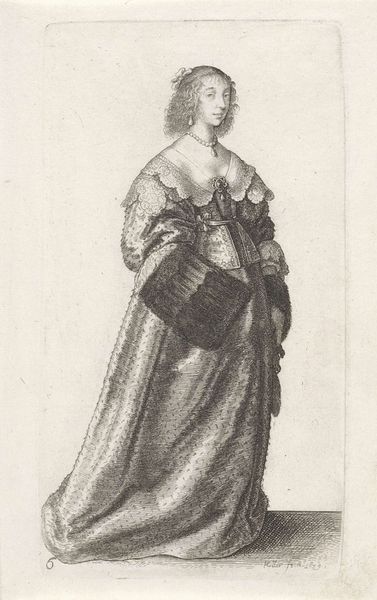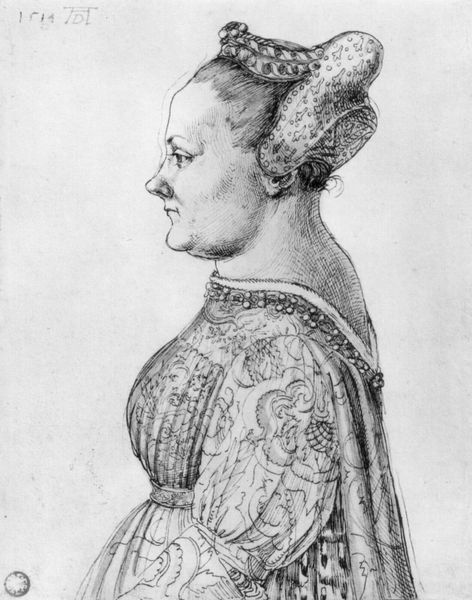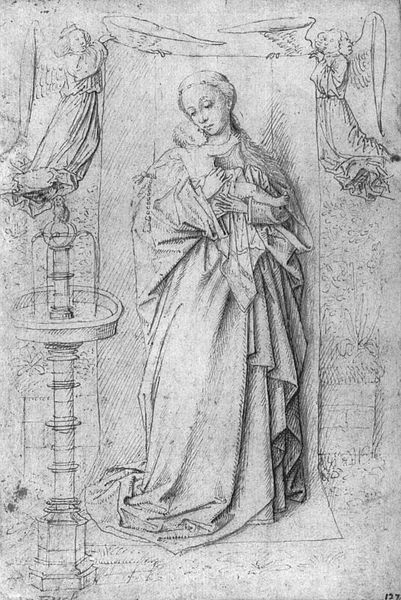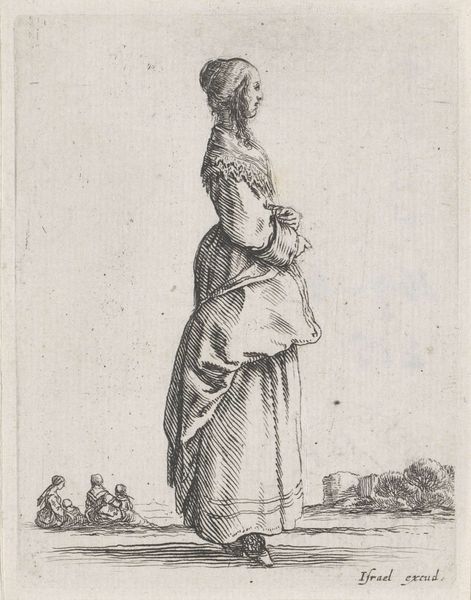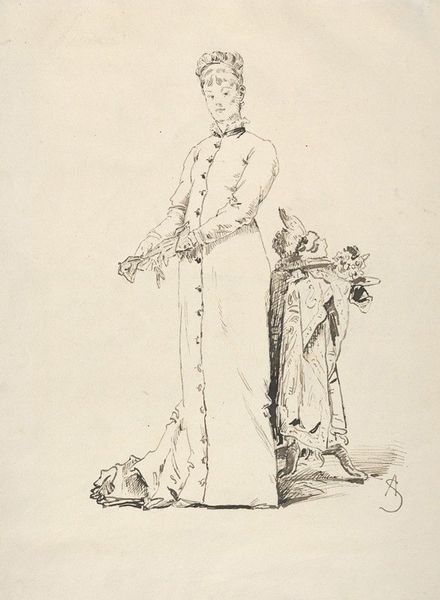
drawing, pencil
#
portrait
#
pencil drawn
#
drawing
#
pencil sketch
#
figuration
#
sketch
#
pencil
#
christianity
#
costume
#
history-painting
#
northern-renaissance
#
christ
Copyright: Public domain
Editor: So, this is Albrecht Dürer’s drawing of Saint Catherine, made with pencil. It feels very… immediate, almost like a study. The lines are so economical, but they really define the drapery and her form. What do you make of this piece? Curator: Well, I’m immediately struck by the materiality of the drawing itself. Consider the availability and cost of paper and pencils at the time. This wasn't just a sketch; it was a deliberate act of production, utilizing precious resources. Editor: Right, I hadn’t thought about the material value. How does that shift our understanding? Curator: It reframes the drawing. Is it purely a preparatory sketch? Or a valuable artifact showcasing Dürer’s skill, meant for circulation amongst a certain class of collectors? The precision suggests a market aware artist conscious of an elite audience. It would’ve signaled sophistication to possess such an image. Look at the deliberate layering of the lines. What labour went into that production and consumption? Editor: That’s fascinating. It makes me wonder about the economic value of art-making in that period and the specific patronage Dürer might have relied on. The labour implied definitely isn't something I'd have considered. Curator: Exactly. Consider too the socio-political implications of depicting a religious figure. What's the intersection of church commission, artist labor, and commodity? How did these intersect? Editor: This really opened my eyes to seeing art beyond just its aesthetic value and start considering art in the art world context. Curator: Indeed. It’s about dissecting the processes, materials, and social dynamics that underpin every brushstroke or, in this case, pencil line.
Comments
No comments
Be the first to comment and join the conversation on the ultimate creative platform.
